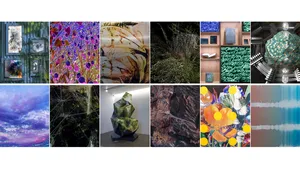Discover India through its crafts
Crafts are an essential part of India’s rural economy and also play an important role in India’s history and communities across the country today. Expanding our partnership with India’s Ministry of Tourism, we’re launching “Crafted in India” on Google Arts & Culture, so more people from around the world can discover the beauty and heritage of crafts from all 29 states of India. We spoke to Jaya Jaitly, the President of our partner institution Dastkari Haat Samiti, who traveled around the country for two years to document and preserve the items in the exhibition.
Tell us a bit more about yourself and your work in India.
I spent some years of my childhood in Japan, where I became a lover of art, crafts and textiles. I also have a passion for social activism, so it was a natural fit to explore the traditions of my home country India through these guiding principles—showcasing not just the crafts themselves, but how they lift up the economic and social status of the craft-makers. By documenting their work I strive to promote their culture and show how their designs and skills suit a contemporary and ever-changing world.
Why a project about crafts from India?
I was very excited when we got an opportunity to use the platform that Google Arts & Culture has created to show the world our craft creators. They have amazing skills, great resilience and work closely with their communities and environment. There is so much to discover, like how you can craft paper from the most unexpected materials, like pineapple fibres, old currency, or animal dung.
What aspect of Indian crafts did you capture and discover?
I hope we have captured the fantastic diversity of India’s crafts. Our stories show many different lifestyles, languages, communities, identities, styles of dress and traditions that India has nurtured over centuries. I am especially proud of the stories in the exhibition that show the strong role of women.
Metal forms of animals and insects are made by Rajasthan's Gadiya Lohar community. They believe their ancestors used to make weapons for the royalty in 16th Century.
Kauna Grass Craft at Ima Market . Women control the marketing of crafts and agricultural produce in most of the north-eastern states of India.
Bell Metal Casting is first crafted by hand onto wax, which is covered by clay and the wax melted out to create a mould. Molten metal, around 1100 degrees celcius, is poured into that clay mold.
In Bagh weaving and printing, the black color is made by fermenting iron with jaggery. Once prints are dry, it is washed in the river and beaten to remove excess color.
Mata ni Pachedi. The ‘Mata’, or the Mother Goddess shrine cloth, is most in demand during Navratri, the festival spanning nine days when incarnations of Goddess.
Channapatna Toys. Traditionally known as Keel Kudure, meaning horse on false legs, is inspired from a folk dance of Karnataka.
Zari Zardozi is a style of metallic thread embroidery done with a hooked awl kind of needle called Aari. Many different kinds of needles are used depending on the design.
Working on the project, is there anything in particular that surprised you?
Living in urban India and familiar with many kinds of lifestyles all over the world, I was fascinated to discover how many of our craftspeople hold on to old practices and techniques despite the laborious processes involved. Their versatility in adapting to new materials, audiences and customers showed their sense of pride in their heritage.
How do crafts define the people and the culture of India? What can you learn about India through its crafts?
India is now prominent on all sorts of platforms across the world. And craft, in all its varieties, is one of the strongest crucibles of India’s culture. It can be at the center of developing our rural economy, sustaining our planet and promoting our diverse people and livelihoods. I also hope it will encourage people who enjoy the exhibition to come to India and engage with it more closely—this is just a small peek at the vast treasure chest on offer.







